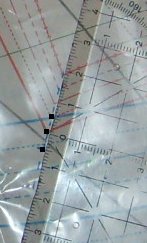… habe ich auch noch nicht gezeigt. Vom Mai wohlgemerkt. *hüstel*
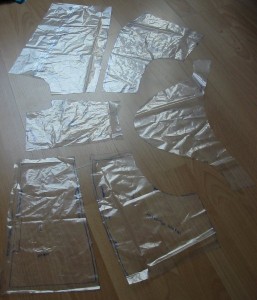 Also kommen hier erst einmal die Schnitteile der Jacke.
Also kommen hier erst einmal die Schnitteile der Jacke.
Unten auf dem Bild sind die beiden Rückenteile, darüber der Sattel. Oben liegen die beiden Vorderteile. Und rechts der Ärmel.
Auf dem Bild fehlt noch der Kragen und die Schulterklappen. (Von letzteren habe ich leider kein Bild gemacht. Für die Knopfblende und den Bund gibt es kein Schnitteil, die sind rechteckig und ich habe sie einfach vermaßt und direkt auf den Stoff gezeichnet.
I’ve never shown the “big whole”… from may. neither the whole outfit nor the pattern of the jacket.
So here are the finished pattern pieces of the jacket: on the bottom of the pic the side and middle back pattern, above them the yoke and an top the side and middle front pattern. On the right side the sleeve.
Not on the picture ist the collar and also the epualets. (I forgot to take pictures of the latter one.) For the buttonstand and the “waist”band (which is not on waiste level) I made no patterns. They are rectangular and I marked them directely on the fabric.
Und hier endlich…. ein Bild vom Gesamtoutfit.
Ich war mir relativ unsicher, ob die Proportionen mit dem kurzen Jäckchen bei meiner Figur eine gute Idee ist.
Aber ich muß sagen, zu meiner eigenen Überraschung gefällt es mir tatsächlich. Und wenn ich genau hinsehe… Ich glaube mein Indienurlaub hat Spuren hinterlassen. Ein Kameez wäre länger, aber mit Churridar und einer Jacke (die auch länger wäre) würde es ähnlich aussehen.
Statt schwarzer Schuhe habe ich auch türkise und seit dem Schlußverkauf in Paris sogar weiße. (Na gut, off white…)
Eine Frage bleibt allerdings: Was für eine Handtasche paßt dazu? Ich könnte mir ja so ein oversized Riesenteil vorstellen (ein Vorteil wenn man dick ist, man kann beliebig große Handtaschen verwenden ohne auszusehen wie der sprichwörtliche Schwanz, der mit dem Hund wedelt…), aber wie genau sollte sie aussehen? Und welche Farbe?
Vorschläge? Ich bin offen für alles…
And here is finally the picture of the complete May outfit. I was not sure at all whether the cropped jacket was a good idea for my figure.
But to my own surprise… I like it! And if I give it a closer look… I think the holiday in India still shows. Sure, a kameeze would be longer, but with churridar and a typical jacket (which would be longer also)… it’s not so far of. I think.
Instead of black shoes I also could wear turquoise ones and since the summer sale in Paris I also own white (okay, off-white) ballerinas.
Remains one question: What kind of a bag/tote/purse/… do I wear with that? I could imagine one of those huge oversized ones (an advantage when you are oversized you can wear big bags without looking like the tail that wags the dog….), but what exactely should it look like? And what colour would be good?
Any ideas? I’d appreciate to hear of them…
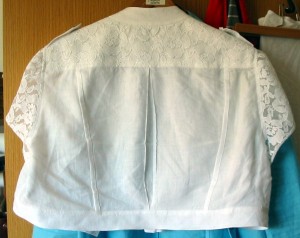 Zu guter letzt auch noch ein Bild von der Rückansicht der Jacke.
Zu guter letzt auch noch ein Bild von der Rückansicht der Jacke.
Aufgenommen NACH einem Tag tragen und einem Abend herumsitzen, deswegen ist sie so zerknittert und die Rückenfalte ist aufgedehnt.
Aber ich denke die Details wie die Rückenfalte und der Sattel sind wenigstens gut erkennbar.
And finally I managed to take a picture of the back of the jacket.
It was taken after a day of wearing the jacket and a long evening sitting around, so it is wrinkled and the box pleat on the center back is opened up.
But I think you can at least see the details like the pleat and the yoke.
So, dann ist hiermit der Montivationsmonat Mai auch abgeschlossen… Ist ja erst Juli… (und zu kalt um das Outfit anzuziehen…. :-/ )
So finally the May sew along is done. It’s only July now… (and to cold to wear that outfit…:-/ )


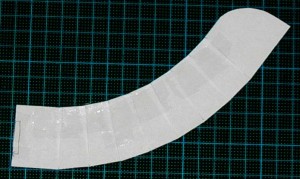
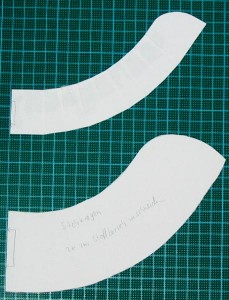
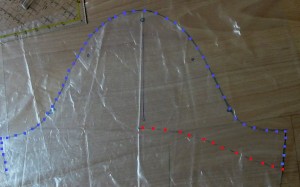
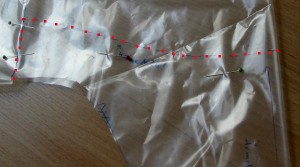
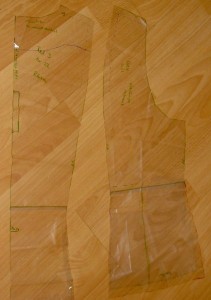
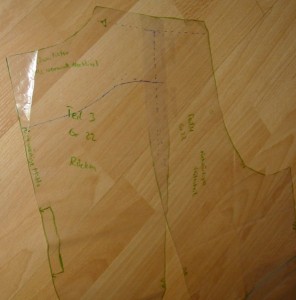
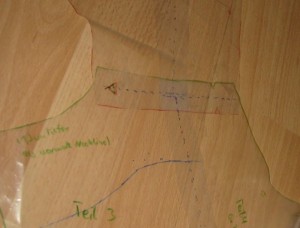
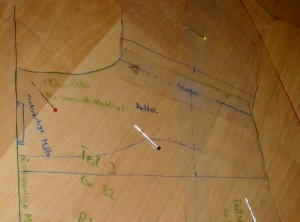
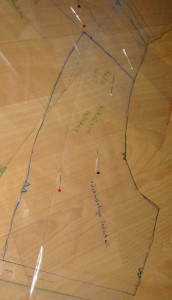
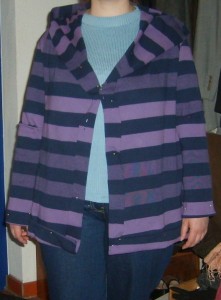
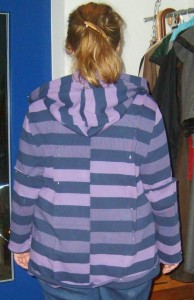
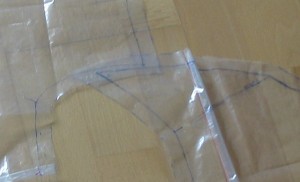
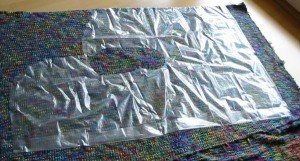
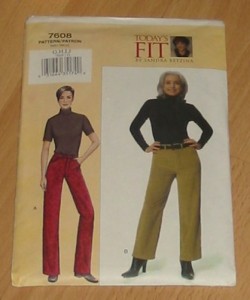

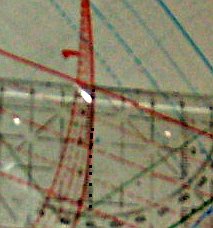
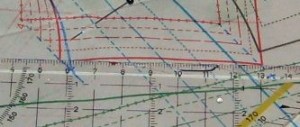
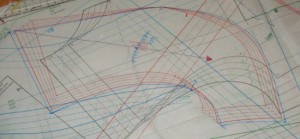
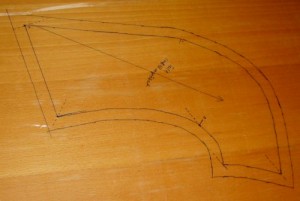
 Diese Shirt aus der Burda vom August letzten Jahres habe ich mir für den Motivationsmonat vorgenommen.
Diese Shirt aus der Burda vom August letzten Jahres habe ich mir für den Motivationsmonat vorgenommen.

